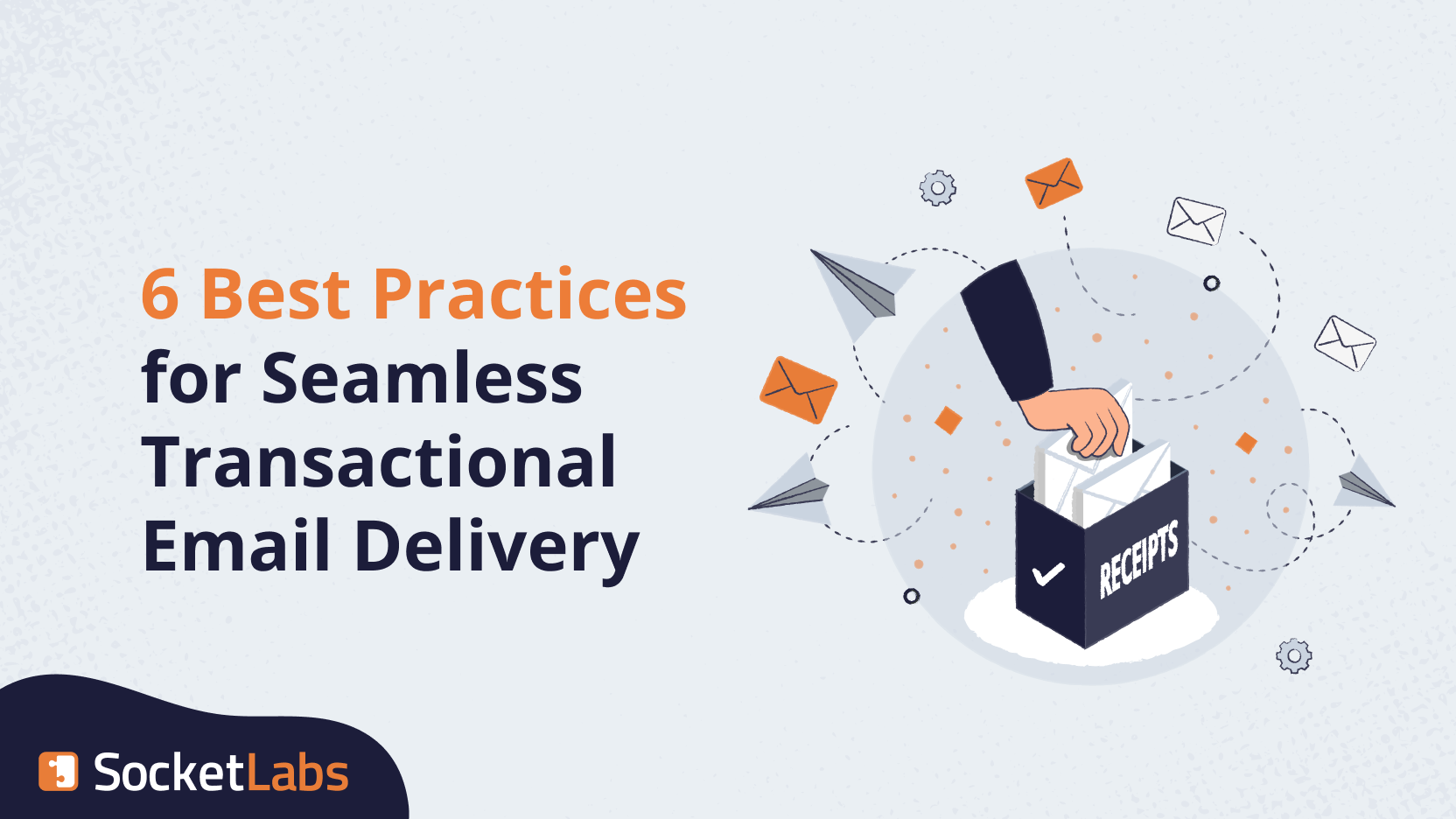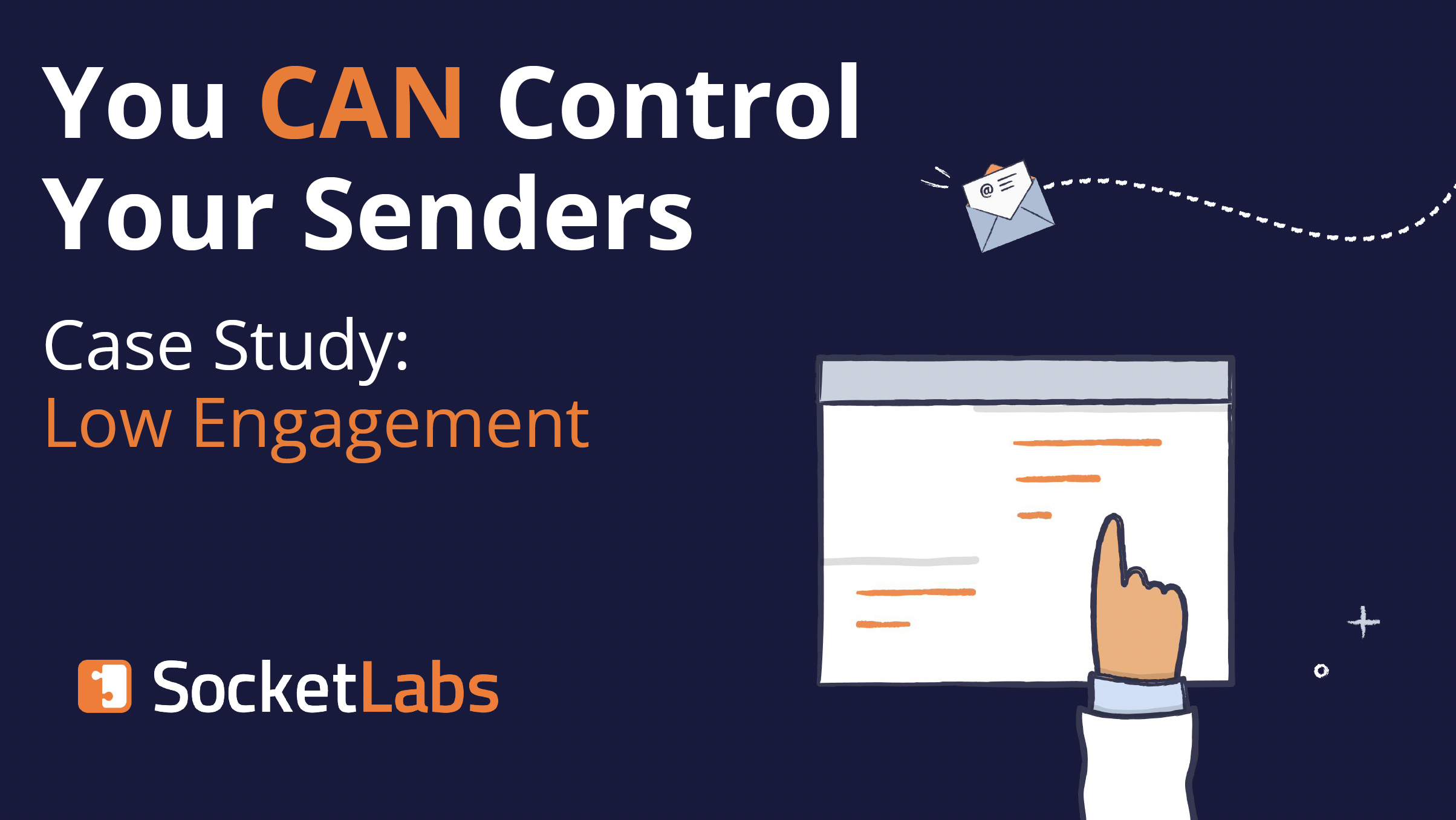
You won’t enjoy successful transactional email delivery unless you’re following best practices to a T. With myriad recommendations available, we narrowed down the list to our favorite six practices to help improve your chances of those critical emails making their way to inboxes. Let’s get started!
Differentiating Transactional Email Delivery from Marketing Email Delivery
There are few really clear distinctions between transactional and marketing email.
- Marketing emails are promotional in nature, including newsletters, offers, coupons, and similar emails. Their goal is to drive some business. You know ’em.
- Transactional emails are typically triggered from an application to recipients via an SMTP relay or transactional email API. These are the must-deliver messages like password resets, order receipts, shipping notifications, and other critical communications related to user transactions.
Transactional Email Sender Best Practices
The fun part is here! These are the six most important best practices to follow to better ensure transactional email delivery.
1. Respect the differences we outline above
It’s a legal matter. There are certain allowances for transactional email that marketing email don’t enjoy, like the ability to continue sending these transactional messages even if the recipient opted out of email. This is because, of course, they’re intentionally not promotional in nature and are directly related to some kind of request, like a purchase or a password reset. You can’t get tricky and try to load those emails up with marketing messages. Not only do they break spam rules, you’re probably going to annoy your recipient. Bye bye repeat business.
2. Clearly identify the purpose of the email
Your message needs to be absolutely straightforward. Back to basics: Identify the “who,” “what,” and “why” of the email to avoid confusion. Trying to doll it up with too much unnecessary information or making it’s purpose hazy (“Is this a password reminder or a message about their current sale?”) can create a negative experience.
To K.I.S.S., try these techniques:
- Use a friendly “From Address.” The “From Address” is one of the first elements recipients see. Use a well-formatted address reflecting your brand and helps recipients recognize your email.
- Brand your message. Incorporate your company name and/or logo in your transactional emails. This branding reassures recipients that the email is legitimate and builds trust.
- Add relevant information in the subject line. While we all love a snazzy subject, this time you want to focus on intent. If you can make it a little creative while doing so, pat yourself on the back! Include key information, such as order numbers or account updates, to help recipients quickly understand the email’s relevance.
- Use preheader text. The preheader text is displayed below the subject line and offers an additional opportunity to provide context. Use this space effectively to support the subject line and entice recipients to open the email.
These are simple things you should really be doing with all your emails, but it’s especially helpful with transactional messages.
3. Use a “Reply-to” address
As a recipient of transactional email, it’s very common to notice these emails either simply using a no-reply email address to send the message or actually stating it’s a no-reply to encourage you to…not reply… But using a reply-to and having someone monitor the box can encourage people to engage with the message, adding another valuable positive point toward your sender reputation. It’s also a really nice touch to indicate you care about customer support.
4. Prioritize security
Transactional emails usually contain sensitive and/or time-critical information. These need to be secure. The last thing you want is your transactional email filled with personal information hijacked. We suggest these security tips for everyone in every circumstance, but especially when discussing transactional email delivery.
- Set up sender policy framework (SPF) records. SPF records authenticate your domain, signaling to mailbox providers your emails are legitimate. An SPF-protected domain is less attractive to malicious individuals and reduces the likelihood of your emails being flagged as spam or going undelivered.
- Sign your emails with DomainKeys Identified Mail (DKIM.) This adds a digital signature to your emails, verifying their authenticity and ensuring they haven’t been tampered with during transit. DKIM defends against malicious modifications and enhances the trustworthiness of your transactional emails.
- Set a DMARC policy. DMARC (domain-based message authentication, reporting, and conformance) enables you to instruct mailbox providers on how to handle unauthenticated mail. By setting a DMARC policy, you establish guidelines for handling suspicious emails and protect your brand reputation.
Again, these are best practices for all manner of email, but it’s especially important for transactional email.
5. Comply with email laws
Adhering to local email and data privacy laws is a non-negotiable when sending transactional emails. Familiarize yourself with the email regulations in your target regions to ensure compliance and maintain a positive sender reputation. Here are some examples of international spam laws. Pay special attention to the General Data Protection Regulation (GDPR), because it concerns the recipient’s location, not your location as a sender.
- USA: CAN-SPAM Act
- European Union: GDPR
- Canada: Canadian Anti Spam Legislation (CASL)
- Australia: Australian Privacy Act
By complying with these laws, you demonstrate respect for both recipients’ privacy and the rules at play in the email, which can improve transactional email delivery.
6. Monitor deliverability and open rates
This is another all-kinds-of-email piece of advice, but watching delivery and open rates of your transactional emails is important to gauge their effectiveness and identify any potential issues. Although transactional emails are typically wanted by recipients, factors such as content, image-only emails, placements on prominent blocklists, lack of authentication, low reputation, or unforeseen mailbox provider changes can affect deliverability. Keeping a close eye on these factors makes you better primed to react when you need to.
Want Reliable Transactional Email Delivery? We Got You.
We’re confident these six practices above will help your transactional email delivery at any email service provider you might use. But with SocketLabs, we have specialized features and tools to assist you in incorporating these best practices. You can trust us to empower your email communication and take your transactional emails to the inbox where they belong.







